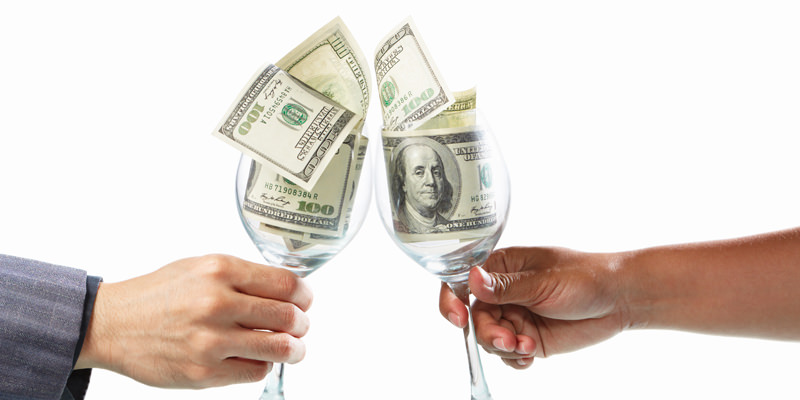Trying to understand the markup you’re paying for a bottle of wine can be incredibly confusing. There are tons of variables to consider: did you purchase the wine at a retail shop or at a restaurant? Where was this place that you bought the wine located – was it in a high rent area or low rent area? How about size, is this a big expansive place with a ton of professional sommeliers or staff, or is it a simple neighborhood spot? All of these factors and many more play into what you’ll wind up paying for your bottle. That being said, there are some general rules that most places follow, so we’ll try and break down as simplistically as we can the markup you theoretically should expect to pay.
Wine Shops and Chain Stores
Let’s start here because this is the place where most of America buys wine.
Thanks to the three-tiered system, before a bottle of wine ever reaches a store’s shelves, it has to go through a distributor. The distributor is the only one legally allowed to sell to retail – the same is true for restaurants – which means the wine receives a markup even before you see the final price. In general, a distributor will take the price they paid the winery for the bottle and double it when they sell it to the store, so if the bottle cost the distributor $5, they’re selling it to the village wine shop for $10.
Once the bottle arrives in the store’s hands, most outlets take the price they paid for the bottle and multiply is by 1.5 – so if the store paid $10, you pay $15. This, however, is a generalization, because as we mentioned earlier, if the store is in a more expensive area of town or has a large amount of square footage, they may mark the bottle up a bit more than 1.5 to help make their margin and cover their costs. On the other end, some big box outlets such as Costco, Walmart and Trader Joe’s will mark the wine up less than the 1.5 multiple, either to use the wine as a loss leader or because their buying power allows them to get a better price from the winery and distributor in the first place.
Restaurants
Restaurants are an entirely different beast when it comes to wine markups. For most restaurants wine sales are one of the main places where they make their profits, so it’s generally accepted and understood by most consumers that the price of wine at a restaurant is going to be considerably higher than most retail outlets. How much higher? Well that depends…
First let’s talk about wine by the glass. As a general rule, the cost of a glass of wine is going to cost exactly what the restaurant paid for the bottle. So if they paid $10, that wine by the glass will cost $10. With 4-5 pours in a bottle, that means the restaurant takes in a nice profit of $30 to $40 per bottle. Not bad for helping to cover all their costs.
When it comes to wine by the bottle, markup is a bit more dependent on location, margin needs and of course how popular the wine might be in the first place. Generally a restaurant will take the price they paid the distributor and multiply it by anything from 2 to 5. In surveying a wide variety of restaurants we’ve found a multiple of 3 to be the most common. This means if the restaurant paid $15 for the bottle you’re paying $45.
But this standard multiple isn’t where the pricing always ends for bottles. Let’s say that bottle of $15 wine that normally would get marked up to $45 happens to be Pinot Noir, which is oh so hot right now, meaning the restaurant knows they can sell a Pinot for at least $55. Well then, that’s what the bottle will sell for.
The same is true for regions – if the region has a reputation for being high end or trendy, such as Bordeaux, Burgundy, Tuscany, or Rioja the wine’s price will reflect that, despite what was paid for the bottle. But a region’s reputation can also benefit you on the inverse. Let’s say that bottle of Pinot at $15 cost actually happens to be from a region that’s known to be great for budget seekers, such as the Languedoc, Chile, or South Africa, then that bottle is very unlikely to be marked up much past a multiple of 3.

